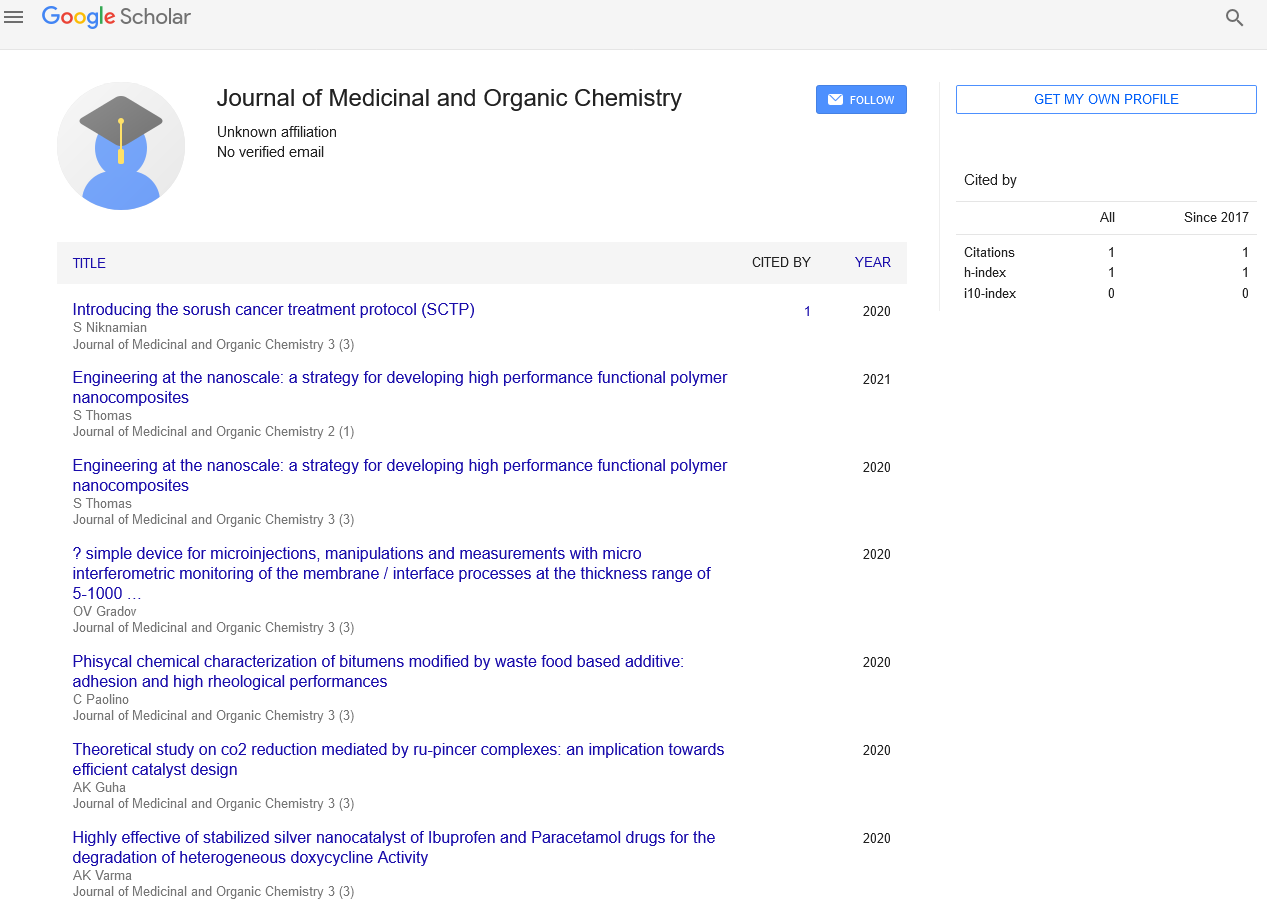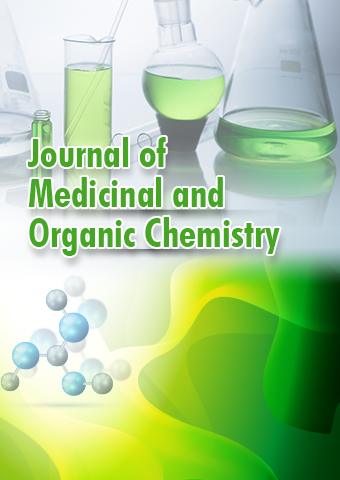Perspective - Journal of Medicinal and Organic Chemistry (2024) Volume 7, Issue 6
Propranolol and its Mechanism of Action
- Corresponding Author:
- Mingrui Li
Department of Chemistry,
Tribhuvan University,
Kathmandu,
Nepal
E-mail: xjren@but.edu.cn
Received: 03-Jul-2024, Manuscript No. JMOC-24-140534; Editor assigned: 08-Jul-2024, PreQC No. JMOC-24-140534 (PQ); Reviewed: 22-Jul-2024, QC No. JMOC-24-140534; Revised: 02- Dec-2024, Manuscript No. JMOC-24-140534 (R); Published: 30-Dec-2024, DOI: 10.37532/jmoc.2024.7(6).277-278
Introduction
Propranolol is a widely used medication belonging to the class of beta-blockers. It exerts its effects primarily on the cardiovascular system, but its pharmacological actions extend beyond that, influencing various physiological processes. The pharmacodynamics of propranolol involves its antagonism of beta adrenergic receptors. These receptors play crucial roles in regulating heart rate, blood pressure and other sympathetic nervous system responses. By blocking these receptors, propranolol reduces the effects of catecholamines like adrenaline, resulting in decreased heart rate and blood pressure.
Description
Clinically, Propranolol is indicated for several medical conditions. Its primary use is in the management of hypertension and angina pectoris. By reducing heart rate and myocardial contractility, propranolol helps in lowering blood pressure and oxygen demand on the heart, thus alleviating symptoms associated with these conditions. Beyond cardiovascular indications, propranolol is also used in the treatment of anxiety disorders. Its ability to cross the bloodbrain barrier allows it to modulate adrenergic activity in the central nervous system, reducing symptoms of anxiety such as palpitations and tremors. This dual action on both peripheral and central adrenergic systems underscores its efficacy in managing anxiety related symptoms.
Side effects associated with propranolol use are generally related to its beta blocking activity. Common adverse effects include bradycardia, hypotension and fatigue. These effects are often dose dependent and can be mitigated through careful titration of dosage. Additionally, Propranolol has been associated with central nervous system effects such as vivid dreams and sleep disturbances, reflecting its action on adrenergic receptors in the brain. In recent years, research into Propranolol has expanded beyond its traditional clinical uses. Studies have explored its potential in treating conditions such as migraine headaches and essential tremor, highlighting its broader neuroprotective and neuromodulatory effects. Furthermore, ongoing research into propranolol’s role in reducing the emotional intensity of traumatic memories suggests potential applications in Post-Traumatic Stress Disorder (PTSD) and related psychiatric conditions.
Propranolol is a non-selective beta-adrenergic receptor antagonist belonging to the class of drugs known as beta-blockers. It exerts its pharmacological effects primarily through competitive antagonism of beta-adrenergic receptors, particularly beta-1 and beta-2 receptors, in the sympathetic nervous system. This mechanism of action results in a wide range of physiological and therapeutic effects. Beta-adrenergic receptors are integral components of the sympathetic nervous system, which plays a crucial role in regulating the body’s response to stress and maintaining cardiovascular homeostasis. These receptors are found on various tissues throughout the body, including the heart, blood vessels, lungs and other organs.
Propranolol acts by binding to and blocking these receptors, thereby inhibiting the effects of catecholamines such as adrenaline (epinephrine) and noradrenaline (norepinephrine). By antagonizing beta-1 receptors predominantly located in cardiac tissue, propranolol reduces the chronotropic (heart rate) and inotropic (contractility) responses to sympathetic stimulation.
This leads to a decrease in heart rate and cardiac output, which can be beneficial in conditions such as hypertension, angina pectoris and certain arrhythmias. In addition to its effects on the heart, propranolol also blocks beta-2 receptors found in the smooth muscle of blood vessels and bronchi. This results in vasodilation and relaxation of bronchial smooth muscle. The vasodilatory effect contributes to its antihypertensive action by reducing peripheral vascular resistance, thereby lowering blood pressure. Meanwhile, the bronchodilatory effect is useful in managing conditions like asthma and chronic obstructive pulmonary disease (COPD), although caution is necessary due to potential bronchoconstriction in some individuals. Beyond its cardiovascular actions, propranolol crosses the blood brain barrier, allowing it to exert effects on the central nervous system. It can attenuate sympathetic nervous system activity in the brain, leading to reductions in tremors and symptoms associated with anxiety disorders, such as performance anxiety and social phobia. This central action is due to propranolol’s ability to inhibit the release of noradrenaline in certain brain regions involved in the stress response.
Propranolol also has implications beyond its primary pharmacological actions. It has been studied for its potential anti-inflammatory properties and its role in modulating memory consolidation, particularly in relation to emotional memories. These additional effects highlight the diverse physiological impacts of propranolol beyond its well-established cardiovascular and anxiolytic properties. In clinical practice, propranolol is widely used for various indications, including hypertension, angina, arrhythmias, migraine prophylaxis, essential tremor, anxiety disorders and certain types of stage fright. Its efficacy and safety profile have made it a cornerstone in the management of cardiovascular diseases and anxiety-related disorders, although careful consideration of contraindications and potential adverse effects is essential in clinical decision making. Overall, the mechanism of action of propranolol underscores its utility across a spectrum of medical conditions, primarily through its antagonism of beta adrenergic receptors in the sympathetic nervous system. By modulating sympathetic activity at multiple levels, propranolol exerts profound effects on cardiovascular function, respiratory function and central nervous system activity, making it a versatile therapeutic agent in modern medicine.
Conclusion
In conclusion, propranolol remains a cornerstone in cardiovascular and neurological pharmacotherapy. Its mechanism of action, clinical efficacy and evolving research into novel therapeutic applications underscore its significance in modern medicine. As our understanding of adrenergic physiology advances, so too will our ability to harness the full potential of propranolol in improving patient outcomes.

